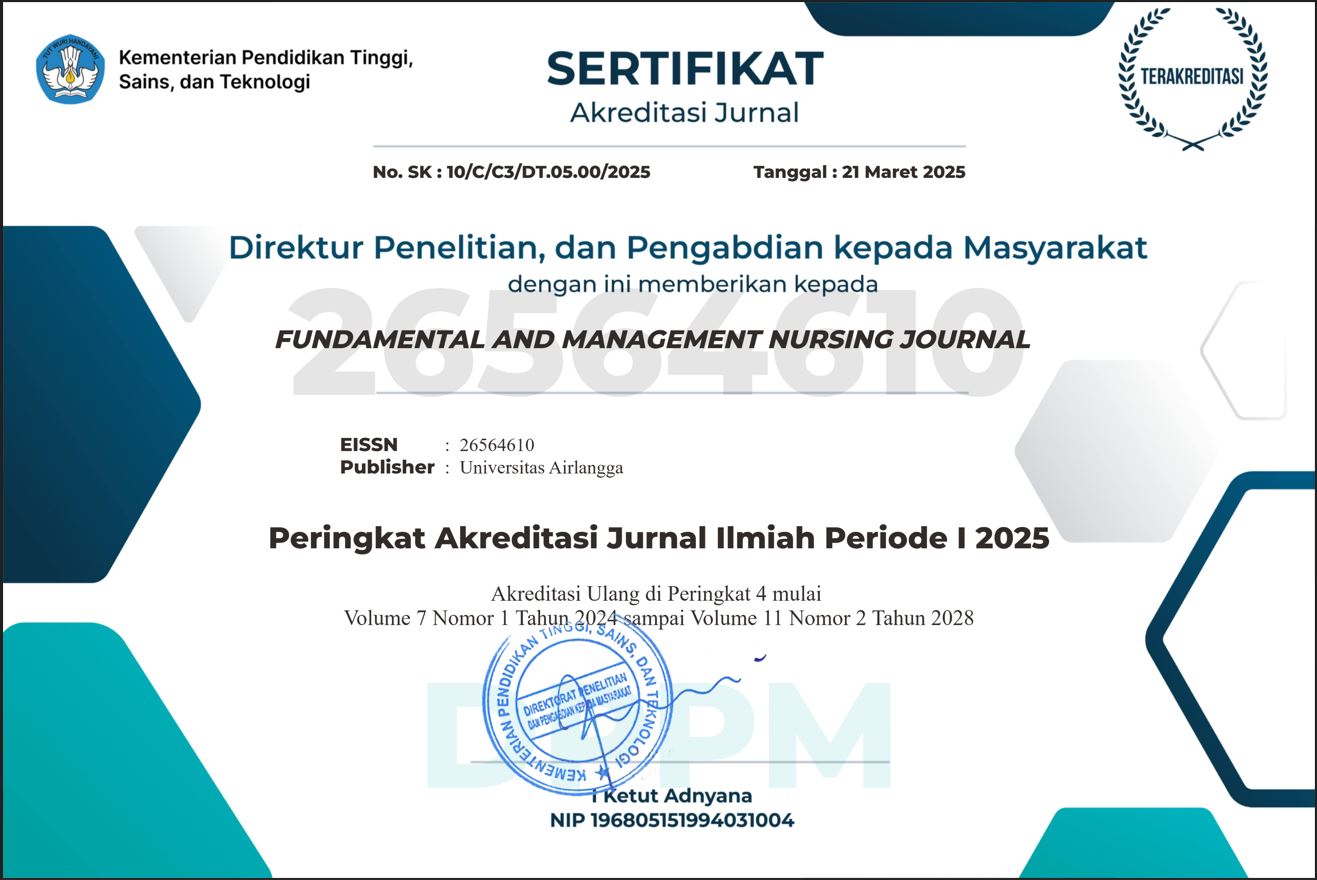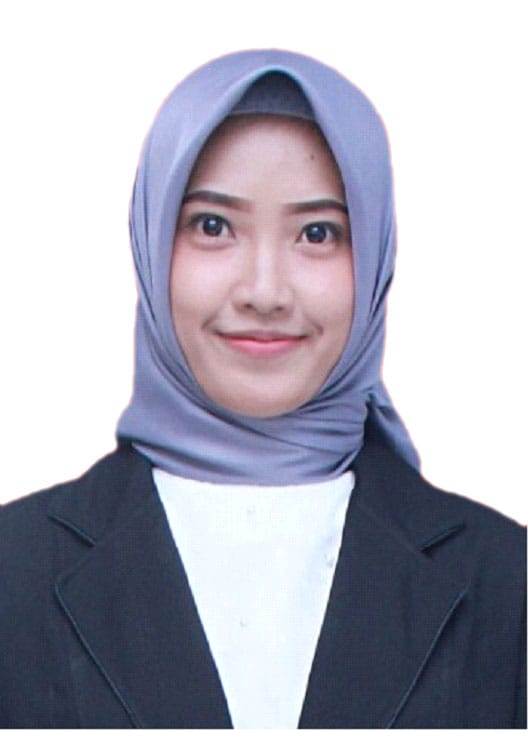Effect of Slow Deep Breathing on Lung Function Among Individuals with Multi-Drug-Resistant Tuberculosis (MDR-TB) at a Regional General Hospital in Indonesia
Introduction: Multi Drug Resistant Tuberculosis (MDR-TB) sufferers experience decreased lung function. Non-pharmacological therapy such as slow deep breathing has been widely applied to improve lung function of individuals with Tuberculosis. However, the results were inconsistant. The aim of this research is to analyze the effect of slow deep breathing on lung function pf individuals with multi-drug resistant (MDR-TB) at the MDR-TB Polyclinic Ibnu Sina General Hospital Gresik, Indonesia.
Method: This study employed a quasi-experimental design with a pre-test and post-test. The population consisted of 294. A total of 35 participants were selected using purposive sampling based on inclusion and exclusion criteria. Data collection involved a Standard Operating Procedure (SOP)-guided intervention in slow deep breathing exercises as the independent variable. Lung function, the dependent variable, was measured using a calibrated spirometry device before and after the intervention. An accidental sampling method was applied, focusing on the availability and willing to participate.
Results: The results showed of 19 (54.3%) and almost half of participants had abnormal lung function, 16 (45.7%) people. After being given intervention, the majority of particupants presented normal lung function, 21 (65.7%) of them and almost half of them had abnormal lung function, 12 (34.3%) of them. Mc Nemar test to determine the effect of slow deep breathing on lung function was p-value of 0.125 > 0.05.
Conclusion: This study documented that slow deep breathing exercises had no significant effect on lung function in individuals with MDR-TB. This likely attributable to other contributing factors, such as routine pharmacological treatment, consistent physical activity, and improved adherence to therapy. These confounding variables may have played a more substantial role in the observed changes. Further research with rigorous experimental designs, involved larger sample sizes, and longer duration of intervention is needed.
1. INTRODUCTION
Pulmonary tuberculosis (TB) remains a major public health concern in many developing countries, including Indonesia. It is a contagious respiratory disease caused by Mycobacterium tuberculosis, which primarily affects the lungs but can also spread to other parts of the body, such as the skin, lymph nodes, bones, and meninges(Afni Anggraeny, 2021).The transmission of TB occurs through the inhalation of airborne droplets released when an infected person coughs, sneezes, or talks. One of the unique characteristics of the TB bacterium is its ability to enter a dormant state, allowing it to remain inactive within the body’s tissues for years. Under certain conditions, such as a weakened immune system, these dormant bacteria can reactivate and cause active tuberculosis. Additionally, Mycobacterium tuberculosis is an aerobic organism, meaning it requires oxygen to grow. This explains its preference for the upper lobes of the lungs, where oxygen concentration is higher, making these areas more susceptible to infection.
Due to the nature of TB infection, it can easily spread among close contacts, especially within households and communities. Mycobacterium Bacillus enter the lung tissue by the respiratory tract (infectious droplets) into the alveoli. This leads to primary contamination (ghon), which can extend to the lymph nodes and form a primary complex (ring). They are called primary TB, and most people experience a cure. Primary pulmonary tuberculosis is contamination before the body develops a characteristic strength against mycobacteria, while primary tuberculosis (reinfection) is pneumonia caused by reinfection of the body when specific immunity to the bacilli is formed(Afni Anggraeny, 2021).Preventing tuberculosis also involves promoting behavioral changes that help reduce transmission to others(Sari et al., 2022)Therefore, interventions that improve lung function and support respiratory health—such as slow deep breathing therapy—may contribute positively to the management and recovery of individuals with TB, particularly those with multi-drug resistant tuberculosis (MDR-TB).
According to the World Health Organization, there are an estimated 10.6 million TB diagnoses in the world in 2021, a jump of around 600,000 cases weighed against an estimated 10 million TB cases in 2020. Of the 10.6 million cases, 6.4 million (60.3%) of them suffer from tuberculosis. It has been reported and through treatment, then 4.2 million (39.7%) have not been found or complained. Since 10.6 million cases in 2021, at least 6 million are adult males, followed by 3.4 million adult females, and the rest of the TB cases are children or 1.2 million cases . Meanwhile, in the context of a study setting, Indonesia has been acknowledged as the country with the second-largest biggest of TB cases globally, after India, followed by China in the third position. In 2020, Indonesia had the third highest number of incidences, so the total number of TB cases in Indonesia in 2021 is estimated to reach 969,000. The value is 17 per cent higher than in 2020, or 824,000 cases. Tuberculosis cases in Indonesia are 354 cases per 100,000 people, meaning that from each 100,000 people in Indonesia, 354 people suffer from tuberculosis. This condition is the dominant obstacle in achieving the goal of clearing tuberculosis by 2030. The success rate of tuberculosis treatment is below the optimal number of 85 per cent, below the global target of 90 per cent of treatment achievement. Meanwhile, the total number of tuberculosis cases detected was subsequently reported to the tuberculosis information system (SITB) in 2022 as many as 717,941 cases, and the detection rate of tuberculosis was 74% (target: 85%). However, the success rate of tuberculosis therapy is 86%. Although still below the global target set by WHO (90%), the success rate of TB treatment in Indonesia is increasing every year. This problem makes Indonesia hope to stop tuberculosis. In addition, individuals with TB who have not found the source of transmission in the community can be a big challenge to the TB control program in Indonesia to defeat TBC .
Particularly, in East Jawa provinnce where was the cinical setting of this study conducted, the number of TB case presented a significant increase. It was 53,289 in 2021 and rised to 81,753 in 2022. This figure makes East Jawa as the second most affected after West Java (Pratama, n.d.). According to the Central Statistics Agency of East Java Province, the incidence of pulmonary tuberculosis in Gresik Regency was 1,760 in 2021, and mortality of individuals with TB in Gresik Regency as many as 88 people in 2022(Indonesia & I, 2023). Pulmonary tuberculosis can be treated and prevented with comprehensive therapy. 85% of individuals with TB were successfully treated within six months by taking medication regularly and other therapies to reduce the side effects of infection. Drugs used to treat pulmonary tuberculosis are drug therapy and non-drug therapy. Pharmacological therapy is a therapy that uses anti-tuberculosis drugs (OTA) in the form of drugs such as bronchodilators and corticosteroids, while non-pharmacological therapy is a form of physical therapy in the form of nebulizers and breathing exercises. Different interventions can be performed in individuals with TB according to the existing complaints. One of the interventions that can be used in the management of individuals with TB to control or reduce dyspnea is exercise therapy in the form of Slow Deep Breathing(Sumartini & Miranti, 2019).
Treatment of tuberculosis also depends on age, health status, response to treatment, type of tuberculosis, and the site of infection in the body. One of the measures to prevent tuberculosis
Copyright (c) 2025 Nur Hafizah, Widiharti Widiharti, Widya Lita Fitrianur, Ernawati Ernawati

This work is licensed under a Creative Commons Attribution 4.0 International License.
1. The journal allows the author to hold the copyright of the article without restrictions.
2. The journal allows the author(s) to retain publishing rights without restrictions.
3. The legal formal aspect of journal publication accessibility refers to Creative Commons Attribution (CC BY).
















